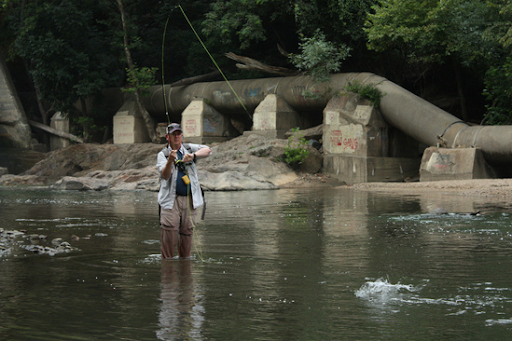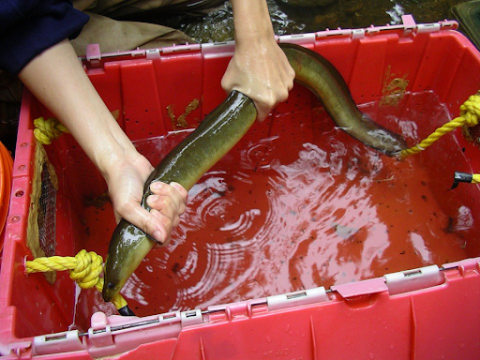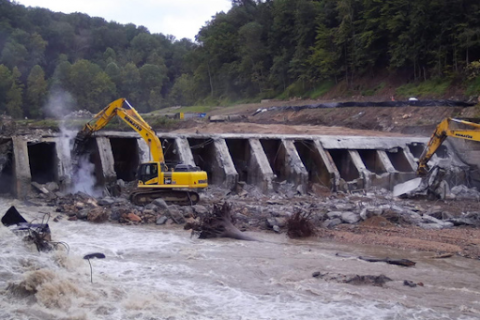{"preview_thumbnail":"/sites/default/files/styles/video_embed_wysiwyg_preview/public/video_thumbnails/nINVNlcLoeo.jpg?itok=0RY_qGU7","video_url":"https://youtu.be/nINVNlcLoeo","settings":{"responsive":1,"width":"854","height":"480","autoplay":1},"settings_summary":["Embedded Video (Responsive, autoplaying)."]}
On Sept. 14, 2018 NOAA and project partners took an explosive step in the Bloede Dam project. Following 10 years of planning, and three weeks after partners celebrated, the explosives were detonated. Immediately the dam was breached. Water and sediment began pouring over the giant structure. Any lingering concrete will be manually removed. The Bloede Dam removal was the largest and most complicated in NOAA’s history, and a major victory for communities along the Patapsco River.
NOAA contributed almost $9 million of the $17 million cost of this project. Over the past 10 years several funding streams were used, including the Community-based Restoration Program, Coastal Ecosystem Resilience program, American Recovery and Reinvestment Act of 2009, and NOAA's Damage Assessment Remediation and Restoration Program funds from the Spectron settlement in Maryland. The remainder of funding came from partners such as the Maryland Department of Natural Resources, U.S. Fish and Wildlife Service, the Coca Cola Foundation, Keurig Green Mountain, and others.
The dam used to block fish migration between the Patapsco River and Chesapeake Bay. As the Patapsco finds its natural course it will open up more than 65 miles of habitat for fish species like American shad, hickory shad, and alewife. These fish spawn in the river, but spend most of their lives in saltwater. It will also open up 183 miles for American eel, which spawn in saltwater but live in freshwater, to access the greater watershed.
The 26-foot high dam was also a serious public safety hazard. At least nine drownings have occurred since the 1980s, the most recent in June 2015. Once the removal is completed the team will begin construction of numerous public works projects. These include a multi-purpose walking and biking trail, park benches, and environmental education signs along the trail. Community groups, especially Friends of Patapsco State Park, have been instrumental in developing these plans. The changes will make Patapsco State park safer and more accessible.
As the river is restored it will create rapids for kayaks and canoes. Recreational fishing in the Patapsco river will also improve, benefiting the local economy and small businesses. Bloede is the third dam to be removed on the Patapsco with NOAA’s support. It is an excellent example of NOAA working alongside private and community partners; restoring the river, and bettering the communities and economies around it.



